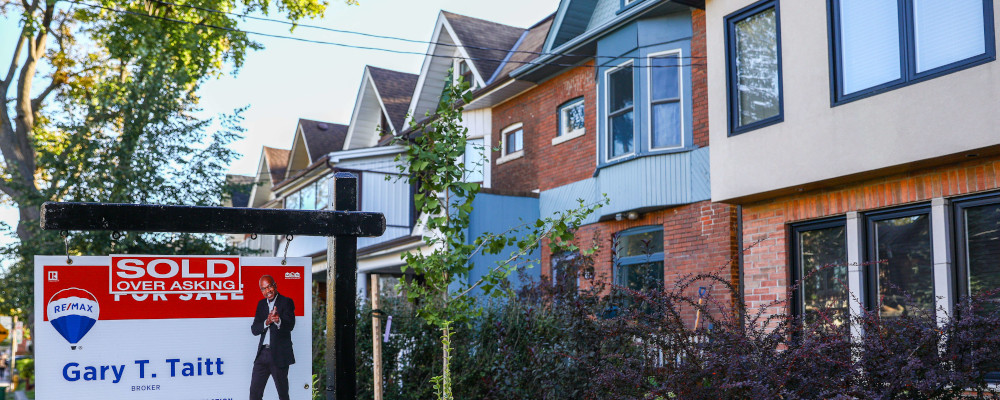Mike Moffat deserves congratulations for serving up some innovative and impactful policy ideas to address Canada’s gaping housing shortage. The federal cabinet would do well to zero in on his suggestions when he briefs them in Charlottetown this week for what is being billed as an important confab on the country’s housing “crisis.” The key point that government ministers need to hear more from Moffat on is reintroducing accelerated depreciation rates for rental housing. Government cannot and should not try to “solve” the housing shortage on its own. Large pools of private capital need to be attracted back into building rental housing and currently the incentives do not exist for this to happen on any meaningful scale.
What is striking about Moffat’s essay and much of the current conversation about housing is the relentless focus on increasing supply. It is as if the issue of housing demand has been erased from policymakers’ minds when it comes to tackling what has been rightly identified as one of the most complex and important issues facing the country.
Take immigration. Right now in Ontario we are adding every two years the population of Mississauga and building a city roughly equivalent in size to Cornwall. To state the obvious, this is completely unsustainable and likely unfixable in any reasonable period of time that voters could and should expect. Yet we know that returning immigration levels, and student and temporary worker visas, back to the twenty-year average of 300,000 people—versus the one million plus arrivals in the last twelve months—would have an immediate and salutatory effect on demand.
Immigration’s impact on housing looks like a live debate going into the cabinet meeting with the new housing minister (and former immigration minister) Sean Fraser publicly musing about putting a cap on the “explosive growth” of international student enrolments.
Let’s hope this is where government ultimately end ups or acknowledging the impact of record population growth on shelter costs. After all, expectations about the future matter as price signals in the here and now. They give buyers and sellers clues as to the direction of travel of a market, in this case, housing. Indicating to the market that demand via population growth will be slower for the foreseeable future would lower shelter prices today and is an easy win.
Immigration of course is a sensitive issue that has many dimensions beyond economics and housing. But to argue that Canada wasn’t becoming more diverse and inclusive at annual migration levels a quarter of what they are today is preposterous. Also, migration isn’t the weather. It is a choice. It can be expanded or lowered according to the absorptive capacity of society. Right now that capacity, in terms of not only housing but a variety of other metrics such as health care and public infrastructure, is clearly beyond reasonable limits.
Missing also from the current discussion is some much-needed soul-searching about the role the federal government has played recently in stoking housing demand, and its corollary, a crisis of affordability. Much of the pandemic-era rise in shelter costs has its origins in a little-known mechanism called the Domestic Stability Buffer. This is the amount of capital that banks are required by the Office of the Superintendent of Financial Institutions to set aside to cover losses in the advent of a Black Swan-type event.
In the Spring of 2022, OSFI cut the DSB from 2.25 to 1 percent, providing Canada’s banks with a massive $300B in new lending capacity or 15 percent of total annual GDP. These funds overwhelming went into residential mortgage origination during the same period the Bank of Canada was slashing its overnight rate and pushing down borrowing cost by buying bonds hand over fist. The combustion of hundreds of billions in new capital and ultra-low rates explains much of the unprecedented runup in prices with average homes nationally now costing as much as average homes in Toronto in 2019. Think on that for a moment…
As with immigration levels, OSFI made a policy choice. Some or all of the $300B in new lending capacity created out of thin air could have been mandated for corporate loans to create private sector jobs or fund new capital investment. But it wasn’t. Instead, OSFI joined the alphabet soup of other Ottawa financial organizations (CMHC, FCAC, etc.) and added to a policy environment already highly favourable to increasing shelter costs.
Part of this week’s cabinet deliberations should be a root-and-branch review of federal policy as it relates to the financialization of housing as an asset. What schemes genuinely help lower-income Canadians get into homes and rental accommodation? Which are in fact subsidies to higher-income Canadians, investors, the banks, and the real estate sector as a whole? Proof point: in what world does it make sense to have over forty percent of residential units in Ontario “investor-owned”, with some communities such as Windsor, Sudbury, and St. Catherines seeing that level approach 80 percent or more?
Here the biggest tool the federal government wields to increase housing affordability is the capital gains exemption on Canadians’ primary residences.
When this policy was instituted in 1971 it was never envisioned as applying to the housing market with an average home price at ten times the average national income. Nor was it meant to shelter millions of dollars of capital gains in luxury home sales in Canada’s major cities for the 1 percent. We need to have an adult conversation about this exemption. Is it really still in our national interest? Beyond its effect on shelter costs, are we OK with the large intergenerational wealth transfers it is increasingly facilitating? Transfers that allow the children of high-income families to “afford” housing in our largest cities, through nothing other than their birth, and price out the less fortunate. One-third of people don’t own a home, and don’t benefit from the subsidy—many not out of choice.

The cautionary tale for not using all the tools at our disposal to address our national housing crisis is what is happening right now to real estate in China.
The Chinese also took housing to their largest asset class by far and trebled, like Canada, over a generation, its contribution to GDP. They used similar tools such as cheap credit from government via the banking sector and tax subsidies to individuals and corporations to engineer a massive explosion of real-estate-related wealth.
Their entire real-estate-led economic growth model has hit a wall. High prices slowed family formation. Ever higher debt levels curbed purchases. The real-estate portion of Chinese GDP is now falling precipitously, and it seems Beijing has few if any tools left to prevent a deep recession that could end up structurally damaging their economy.
Canada has all the same raw ingredients to replicate the toxic housing and real-estate endgame China now faces. The stakes are high. We need bold action and yes there is a case for increasing housing supply. But let’s also think about the policy levers that we have to sensibly curtail demand and unwind the financialization of housing as an asset class. Both are factors that China’s experience indicates can quickly flip an unaffordability crisis into long-term, intractable economic malaise. For all our sakes let’s hope the policy deliberations needed to avoid this “own goal” begin this week in Charlottetown.
Recommended for You

Crystal Smith and Eva Clayton: Indigenous natural resources development is an efficient, fair, and responsible way to advance economic reconciliation

Peter Menzies: Justin Trudeau’s legislative legacy is still haunting the Liberals

‘There are consequences to this legislation’: Michael Geist on why the Canada-U.S. digital services tax dustup was a long time coming

Rudyard Griffiths and Sean Speer: The future of news in Canada: A call for rethinking public subsidies




